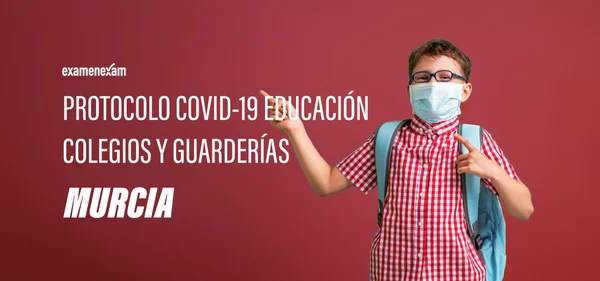
Summary of the COVID-19 protocol School and nurseries of Murcia
The Murcia Ministry of Education, after meeting in a joint committee with the Ministry of Health, reported that it was considering starting the new course as blended. In this way, in September, if the epidemiological situation continued the same, the new course would start, launching the plan for scenario 2: that is, a mix of face-to-face and distance education that will vary according to the educational stage. This plan for the beginning of classes in the schools of Murcia prioritized the beginning of face-to-face classes.
New conditions
Given the complexity of the highly changing situation, and after a study process and considering several alternatives, the Murcian government decided to delay the date of September 7, initially scheduled for the start of the new course to the 14th. With this it intends to gain the necessary time to properly organize the internal management of their educational centers and give way to the start of classes in the schools of Murcia. In addition, there has been an important change in how the classes would be taught, since in its origins the criterion had been adopted that it would be semi-face-to-face, except for minors in the first stage of childhood (0 to 3 years), open classrooms and Education Special, whose students will return in person.
The complexity of the Murcian system
As can be seen, the beginning of classes in the schools of Murcia is quite complex, since this model would be face-to-face for kindergarten and primary school for four days a week, for groups that exceed 20 students per classroom, in the case of 1st and 2nd of ESO if they exceed 24 students per class. In 3rd and 4th of ESO, classes would be semi-face-to-face on alternate days, that is, 2 or 3 days a week. With this system the presence of students in the study center would be reduced by 50%. Regarding the Baccalaureate and Vocational Training course, and attendance will be done in the same way as in the cases of 3rd and 4th ESO, with the exception of the Basic FP which will be the same as in 1st and 2nd ESO.
With regard to Early Childhood Education, stable coexistence groups of between 15 and 20 students from 0 to 3 years old and between 20 and 25 in the rest will be specified, for this the children will have footwear for exclusive use in the classroom. Finally parents can pick them up outside the school. Nor can toys or materials be shared between different groups.
The three possible scenarios
The first scenario was undoubtedly the most favorable in epidemiological terms because it came to contemplate the presence of almost 100% of the students and only proposed a semi-presence system for the Baccalaureate and FP stages, this being an option that centers could join voluntarily. Meanwhile, the third of the scenarios, which is being rejected for the moment, would be the most restrictive, since it would consist of online or distance education, and would be imposed if the epidemiological situation worsens.
The teachers
This community has planned an investment of 10 million euros in education and the hiring of 800 teachers. Teachers must plan and adapt a series of fixed weekly tasks that students must carry out at home on the day they are not attending the centers in person, who must have a suitable venue for the destination of people who, during the day , will present symptoms compatible with the coronavirus.
The students
The Ministry of Education of the Murcia region, for its part, has also proposed that in the course start instructions it is contemplated to allow students to access class with their mobiles, operating, but in silence, to have access to use the 'Radar Covid' application, which according to the Ministry is “an extremely useful instrument in the fight against the spread of the pandemic and in protecting people's health. It is extremely important to generalize its use and this measure helps us to do so among the younger population ”.
General recommendations:
−Measures will be adopted to avoid contact with surfaces that may be contaminated, such as leaving the doors open to avoid contact with knobs, handles, railings, etc.
- Limits will be set as much as possible on the use of circulating paper documents, providing each student with their own notebook and necessary paper material.
- In the event that there is no choice but to share objects, hygiene and prevention measures will be taken to the limit, that is, hand hygiene, as well as avoiding touching the nose, eyes and mouth.
Individual material.
- Starting in Primary Education, all students will bring their own hydroalcoholic solution and a bottle of water to drink.
−It is advised not to share books, notebooks, notepads, etc.
−When leaving the classroom the student must use disposable wipes or cloths and disinfectant products (70º alcohol or disinfectant wipes) suitable for cleaning surfaces and objects (desks, keyboards, computer mice).
−Objects that are for personal use such as glasses, cases, tablets ..., should be cleaned as often as possible with the products indicated above, being able to use a clean cloth with hydroalcoholic solution, soap or alcohol and dispose of it later